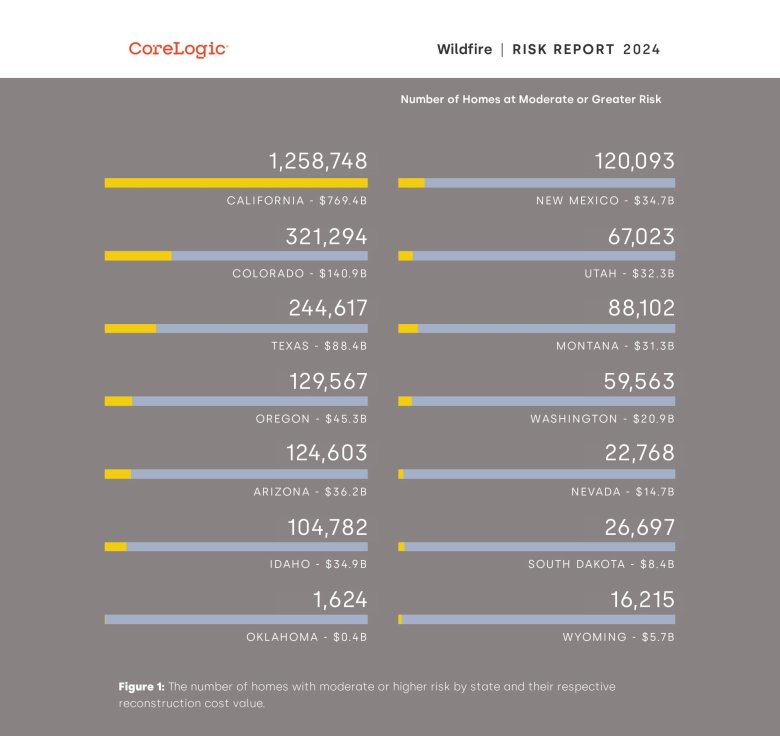When reality has overtaken the cliche, print the cliche.
The Earth actually is melting, at an accelerated pace that has geologists accustomed to thinking in 100,000-year blocks now measuring change at the 100-year level. Our talk with Colorado State University seismologist Rick Aster, previewed below and running at more length later this week at ColoradoSun.com, brought our focus back to global warming in real time.
Rick’s measurements are actually aimed not at ice melt itself, but what happens to the rock shelves called continents lying underneath when that snowcap disappears. Simplified answer: The rock floats, riding around and up and down on the molten interior at the Earth’s core. West Antarctica, the area below South America, is rising at 1.5 inches a year as it sheds ice.
Wait, that could be good, right? A self-correcting problem? As the seas rise and threaten coastlines, the coastline itself rising up could solve that? Correct, Aster says, but only if the melt is held to a moderate level. At the current glacier-gushing rates, the “float” of continental rock can’t keep up with the fast rise of sea water.
And that only helps for the two areas with permanent ice caps, Antarctica and Greenland. Other continents are “stiffer,” without the ability to float. North America, for example, is stuck largely where it is, and will see its ankles — Miami and New Orleans — inundated within our lifetime unless temperatures are stabilized.
Sobering, yes. Aster does not sugarcoat his observations about his beloved Antarctica. But, as we always argue here at The Temperature, knowledge is power. These are the studies that renewable energy activists, for example, are reading when they push for faster change. It’s good to know that Colorado researchers are buried deep in the data that can drive good decisions.
Cheers, and on to the rest of the news …
TEMP CHECK
CLIMATE
Antarctic shedding water weight lifts oceans a world away

10 feet
Amount of sea rise in North America by 2150 if Antarctica melts at current pace
Rick Aster has spent a career checking up on his favorite patient, the Antarctic ice shelf. Lately, the Colorado State University seismologist is worried about the patient’s weight loss. A little slimming amid the constant pressure of global warming could be OK — the Western Antarctic has an unusual rock underlay that could handle a moderate amount of ice melt.
But what Aster and his colleagues have learned recently is that melting could accelerate in a so-called negative feedback loop, overflowing the rock “bowl” holding in a massive glacier and letting in sea water that will make freshwater ice melt even faster.
They’ve also learned more about the gravitational pull of all that fragile ice, and how up to now it’s saved much of Earth’s coastline from further disaster. The mass has acted like a magnet, pulling liquid water up and around the Antarctic in a thicker layer than natural sea level would dictate. That kept water levels down at coastal cities to the north, from Miami to San Diego to Honolulu.
If West Antarctic keeps melting at current rates, the magnet is gone, said Aster, co-author of an ice study published this month in Science Advances. That means even more coastal inundation on the other continents.
The Antarctic glaciers alone could raise sea levels in North America by 10 feet by 2150, Aster said. Add in the melting glaciers of Greenland, the world’s other ice store, and there’s a world of trouble unless humans slow down climate change, Aster said. If we do, the Antarctic’s contribution to rising seas could be limited to just over a foot.
Scientists have sometimes comforted themselves with the knowledge that Earth has been through everything before. The ice sheets were gone in the warming before the last ice age, Aster noted. Continents survived.
“What’s really different in terms of global warming, and different than anything that the Earth has seen as far as we know,” Aster added, “is the rapidity. We’re spiking the carbon dioxide and otherwise changing the climate so rapidly that we’re in territory where it’s hard or impossible to find natural analogs that we can study in Earth’s past history.”
Geologic time goes by in ticks of a million years; climate change time appears to be passing in mere double digits.
“It’s happening so rapidly that we can see these large effects even in a human lifetime,” Aster said. “And that is something that the Earth has not seen before, as far as we know. So that’s the most stunning thing to me.”
Read more about how Aster and their team go about their work in the deep snow and ice of Antarctica, and what they’ve learned about the weight of ice and water, this week at ColoradoSun.com.
MORE CLIMATE NEWS
HEALTH
Colorado still near the bottom nationally in mental health

46th
Colorado’s ranking in a recent survey of state mental health systems
No one keeping up with the mental health landscape in Colorado will be all that surprised to find out where our state landed in the annual rankings from Mental Health America. Colorado is still near the bottom, at 46th out of 51.
The national advocacy organization judges states based on how many people are struggling with mental health and substance abuse issues, and how easy it is to get access to treatment.
Colorado is 50th in prevalence of mental illness and substance abuse, with the highest combined incidence of adults, teens and children who said they have thoughts of suicide, depressive episodes or addiction.
The state did mediocre in terms of access to care. Colorado is 16th best in the percentage of adults who have private insurance that covers mental health and 17th best in that category for kids, for example.
Nationally, 10% of adults who had a mental illness in the past year had private health insurance that did not cover their treatment. The 2008 federal parity law says insurance companies can’t have more restrictive rules for mental health than physical health, but that doesn’t mean it’s available. People are far more likely to have to go out-of-network to get an appointment with a behavioral health provider than they are for other medical care.
The top states overall were Massachusetts, Connecticut and Maine, while the worst were Arizona, Nevada and Montana.
Mental Health Colorado CEO Vincent Atchity said the report underscores once again that Colorado “remains in an urgent crisis that demands immediate and ongoing attention.”
“Despite the strengths and beauties of our state, Coloradans of all ages are experiencing serious mental illnesses, suicidality, and substance use conditions at a higher rate than most of the nation,” he said in a news release.
RABIES
No human cases of rabies so far from puppy adoption event

>80
The number of people who have been screened for rabies exposure following a puppy adoption event at a rescue shelter in Sheridan
More than 20 people have been referred for rabies post-exposure treatment following last week’s announcement about a rabid puppy at a rescue adoption event. But Colorado has so far identified no human cases as a result of the event, as state health officials continue to plead with those who were at the event to come forward for screening.
Rabies is almost universally fatal but can be prevented after exposure (but before symptoms emerge) if those exposed are treated.
A spokeswoman for the Colorado Department of Public Health and Environment said Monday that the state has assessed more than 80 people to determine if they had contact with the puppy that could have spread the rabies virus to them. The 20 people referred for what is known as post-exposure prophylaxis came from that group.
“I don’t want people to either minimize the risk or say ‘I didn’t have that much contact’ or ‘I probably wasn’t exposed,’” said Dr. Michelle Barron, the senior medical director of infection prevention and control for UCHealth and an expert in infectious diseases. “We want the public to get a formal assessment so (public health officials) can ask those questions.”
The puppy, a shepherd mix, was part of a litter brought from Texas to Colorado and made available for adoption at an event July 20 at Moms and Mutts Colorado Rescue for Pregnant and Nursing Dogs in Sheridan.
The CDPHE spokeswoman, Gabi Johnston, said the puppy arrived in Colorado on July 16. It began showing symptoms of rabies July 29, became seriously ill and was euthanized. A veterinarian submitted a sample for rabies testing, which came back positive Aug. 7. CDPHE notified the public Aug. 9.
That delay between when people were potentially exposed at the adoption event and when they were notified is not ideal because the post-exposure treatment should be started as soon as possible. But it is crucial people receive the prophylaxis treatment any time before they begin showing symptoms of infection. Once people begin exhibiting symptoms, especially ones related to the virus’ attack on the brain, then rabies almost always kills — save for a handful of cases worldwide.
Barron said it’s possible the puppy had a lower level of infectiousness at the adoption event, since it wasn’t showing symptoms there. But she said that’s not certain, which is why public health officials are being extra-cautious and urging people to be screened and, if appropriate, start treatment.
“If this was not a uniformly fatal disease, we would play by different rules,” Barron said. “But it’s so high-risk that if we’re wrong about what information you’re giving us, you could die.”
Johnston said the puppy — and likely the rest of its litter — is believed to have had contact with a rabid skunk in Texas. CDPHE said last week that the owners of the puppy and the veterinarian who examined the dog were both bitten. They are among those referred for treatment.
Meanwhile, all of the other puppies from the litter have been surrendered to animal control, where they will likely be euthanized.
“The people who adopted the other puppies were understandably devastated when they learned their puppies were exposed to rabies for a prolonged period of time,” Johnston wrote in an email.
MORE HEALTH NEWS
CHART OF THE WEEK

You knew Colorado was in danger. But did you know it was this bad?
Colorado has more than 320,000 homes sitting in moderate-to-severe wildfire danger, according to the mortgage and insurance company CoreLogic. The analytics firm published a new report with eye-opening charts and maps of just how many homes nationally are in danger zones, and how much it would cost to replace them.
We’re second only to California, with its far larger population of 39 million. The communities up against forested, mountain terrain in the northern Sierra Nevada have seen the most destructive fires in recent years. But CoreLogic’s maps show the scary wildfire band north of Los Angeles in the San Gabriels as an angry red swath awaiting disaster.
Altogether, the CoreLogic report spotlights 2.6 million homes in 14 wildfire-vulnerable states. The total reconstruction cost of those homes? $1.3 trillion.
Thanks for hanging with us — we’d like to think this glacier of a newsletter was packed all the way to the bottom with gemstones and instructive cultural artifacts! If your brain is hungry for more, take a minute to sign up for SunFest’s all-day extravaganza of learning and entertainment, we’ll look forward to seeing you there.
— Michael & John

The Colorado Sun is part of The Trust Project. Read our policies.
Corrections & Clarifications
Notice something wrong? The Colorado Sun has an ethical responsibility to fix all factual errors. Request a correction by emailing corrections@coloradosun.com.





